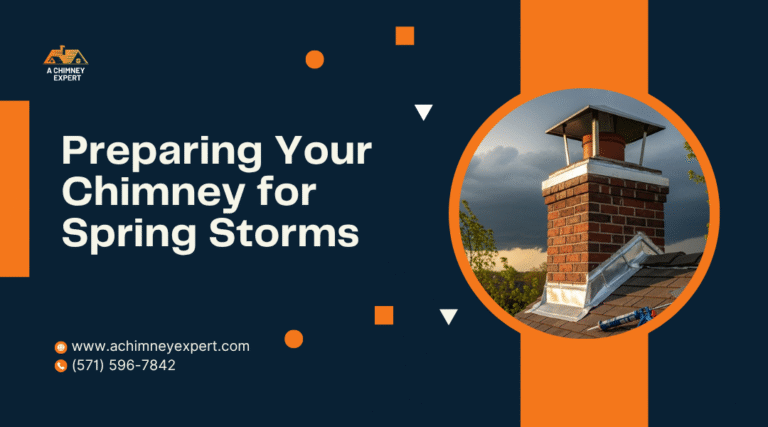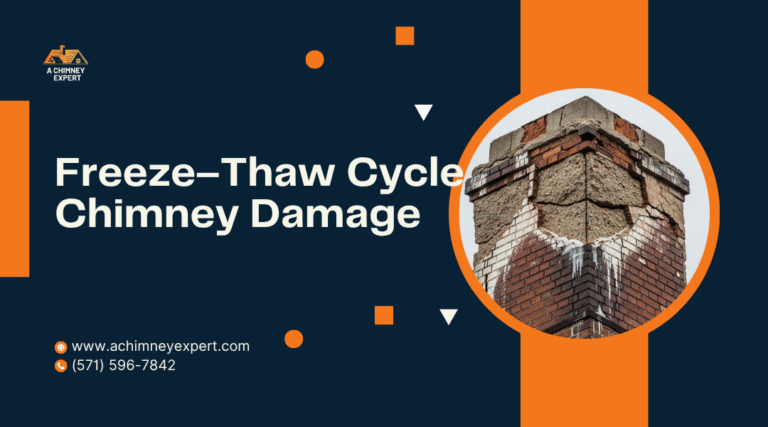Maximizing the efficiency of a wood-burning fireplace or stove is essential for both comfort and cost savings. Many homeowners lose a significant amount of heat through unoptimized setups, but small changes can lead to better heat retention and cleaner burning. Using dry, well-seasoned wood combined with proper airflow and regular maintenance can dramatically improve how much heat your fireplace produces while reducing smoke and creosote buildup.
A Chimney Expert LLC, based in Oak Grove, Virginia, brings decades of experience to help homeowners get the most from their wood-burning systems. Their knowledge extends beyond basic chimney cleaning to include tailored advice on airflow management, chimney insulation, and safe operation that enhances overall wood stove or fireplace performance. These strategies not only boost efficiency but also increase safety in the home.
By focusing on practical steps—such as ensuring the damper is fully utilized, selecting the right wood, and maintaining a clean chimney—homeowners can enjoy more consistent warmth without wasting fuel. A Chimney Expert LLC’s expertise provides the guidance needed to turn a traditional fireplace into a reliable and effective heating source.
Choose The Right Firewood For Optimal Burning
Selecting the proper firewood directly affects heat output, burn duration, and safety. Using the right type and condition of wood reduces smoke, lowers creosote buildup, and improves overall fireplace performance.
Hardwoods Vs Softwoods: What Burns Longer And Hotter
Hardwoods like oak, maple, and birch have a higher density compared to softwoods such as pine or fir. This density allows hardwoods to burn hotter and for longer periods, making them ideal for heating.

Softwoods ignite faster due to their resin content but tend to burn quickly and produce more smoke and creosote. Hardwoods generate steady heat and less residue, which helps maintain chimney cleanliness.
For maximum efficiency, prioritize dense hardwoods. Softwoods can be useful for kindling but should not be the primary fuel for extended fires.
Importance Of Seasoned, Dry Wood
Wood needs to be properly seasoned, meaning it must dry for at least 6 to 12 months to reduce moisture content below 20%. Dry wood burns more efficiently, producing more heat and less smoke.
Wet or green wood requires extra energy to evaporate moisture, lowering burning temperature and increasing creosote formation. This creates safety risks and reduces the lifespan of chimney systems.
Using split wood speeds up seasoning by exposing more surface area to air. Properly stacking firewood off the ground and in well-ventilated spaces promotes faster drying.
Signs Your Wood Is Ready To Burn
Seasoned firewood shows visible cracks or checks on the ends and feels lighter than green wood. It should make a sharp “clunk” sound when two pieces strike each other instead of a dull thud.
Dry wood has darkened bark that sheds easily or is loose. Moisture meters can measure moisture content; readings below 20% indicate readiness.
When burning, seasoned wood lights quickly and burns with a steady, bright flame and minimal smoke. If smoke is excessive or fire struggles to sustain, the wood likely needs more seasoning.
Proper Fireplace And Stove Operation Techniques
Efficient wood-burning depends on the way fires are started, airflow is controlled, and common errors are avoided. Correct methods optimize heat output while reducing wasted fuel and harmful emissions.
How To Build An Efficient Fire (Top-Down Vs Traditional Methods)
The top-down fire building method places large logs at the bottom, with smaller kindling and tinder stacked on top. This setup allows the fire to burn downward, creating less smoke and maximizing heat early in the burn.
Traditional methods start with tinder and kindling at the base, with logs added as the fire grows. While familiar, this method can produce more creosote and smoke if not managed carefully.
Top-down fires tend to burn hotter and cleaner. They also simplify lighting by focusing ignition on the smaller wood above, protecting larger logs from smothering. This method requires using dry, well-seasoned wood for best results.
Managing Airflow And Damper Settings
Airflow is crucial for maintaining an efficient burn. Too much air cools the fire, while too little starves it, causing incomplete combustion. Adjust intake vents to provide steady oxygen without excessive draft.
The damper regulates the chimney’s exhaust flow. It should be fully open when starting the fire to allow smoke to escape quickly. Once the fire is established, partially closing the damper retains heat while maintaining safe ventilation.
Improper damper or vent control can lead to heat loss, smoke spillage, or dangerous creosote buildup. Operators should observe flame behavior and adjust settings gradually to maintain a clean, hot fire.
Avoiding Common Mistakes That Waste Heat
Building a fire with wet or unseasoned wood reduces heat output and increases creosote buildup. Always use dry wood with less than 20% moisture content.

Overloading the stove or fireplace can choke the fire, causing smoke and reducing efficiency. Similarly, underfiring a large stove wastes potential heat and can damage it.
Closing the door too tightly or blocking air inlets restricts combustion air, lowering temperature and promoting smoke production. Monitoring fuel quantity and airflow prevents these issues and ensures efficient burning.
Chimney And Appliance Maintenance For Efficiency
Proper maintenance of both the chimney and wood-burning appliance is critical for efficient heating. This includes removing buildup that restricts airflow, checking seals to prevent heat loss, and recognizing signs that indicate maintenance is needed to keep the burn quality optimal.
Regular Chimney Sweeping To Prevent Blockages And Creosote
Creosote and soot accumulate inside chimneys over time, creating blockages that reduce airflow and efficiency. Creosote is highly flammable and poses a fire hazard if left untreated. Regular sweeping removes this buildup, ensuring proper draft and safer operation.
A chimney should be inspected and cleaned at least once a year, or more often if it is used heavily. Professional sweeping is recommended to thoroughly clear soot and creosote from hard-to-reach areas.
A clean chimney improves heat delivery to the home and reduces the risk of costly chimney fires.
Inspecting And Maintaining Gaskets, Seals, And Dampers
Gaskets and seals on doors and dampers prevent air leaks, which can cause heat loss and reduce stove efficiency. Over time, these components can wear out, warp, or crack, compromising their ability to contain heat.
It is important to regularly inspect these parts for damage and replace them if necessary. Properly functioning dampers control airflow, optimizing combustion and heat retention.
Well-maintained seals ensure that the stove draws air through the firebox rather than unwanted gaps, improving fuel efficiency and reducing smoke in the home.
Signs Your Chimney May Be Affecting Burn Quality
Certain indicators suggest that a chimney or appliance issue is harming burn quality. These include:
- Smoke entering the room instead of going up the chimney
- Excess creosote buildup visible in the chimney or stove pipe
- Difficulty starting or maintaining a fire
- Burning wood that produces excessive ash or leaves unburned material
Any of these signs should prompt an inspection. Problems like blockages, poor seals, or inadequate draft reduce efficiency and safety.
Addressing these issues promptly will help maintain consistent, clean burning and improve overall heating performance.
Upgrade Options To Boost Wood-Burning Efficiency
Improving wood-burning efficiency involves targeted upgrades that enhance heat output, reduce fuel consumption, and lower emissions. Choosing the right equipment and attachments can make significant differences in performance and energy savings.
Installing A High-Efficiency Wood Stove Or Insert
High-efficiency wood stoves and inserts are designed with advanced combustion technology. They burn wood more completely, producing more heat with less fuel. This results in fewer emissions and cleaner indoor air.

Wood stove inserts fit into existing fireplaces, converting inefficient open hearths into sealed, heat-efficient units. They improve heat retention and distribute warmth more evenly throughout the room.
Installation requires professional assessment to ensure proper sizing, ventilation, and compliance with local codes. The upfront cost is offset by long-term savings on wood and heating bills.
Adding A Fireplace Blower Or Heat Exchanger
Fireplace blowers and heat exchangers improve heat circulation by pushing warm air from the firebox into the living space. They reduce heat loss through the chimney by capturing and redistributing heat.
Blowers use fans to move warm air faster, increasing room temperature more quickly. Heat exchangers transfer heat from exhaust gases to the room air without mixing combustion byproducts.
Both options are relatively easy to install and can be added to existing stoves or inserts. They enhance comfort while improving the overall efficiency of the wood-burning system.
Considering EPA-Certified Wood-Burning Appliances
EPA-certified wood stoves meet strict emissions and efficiency standards. These appliances typically offer 30-40% greater efficiency compared to older models.
Certification ensures that the stove burns cleaner, reducing creosote buildup and lowering the risk of chimney fires. It also helps with insurance approval and may qualify for energy rebates.
Choosing an EPA-certified model means investing in technology that balances environmental impact with heating performance. This makes it a practical choice for upgrading wood-burning equipment.
Homeowner Habits That Enhance Heat Retention
Effective heat retention depends on controlling where and how heat moves within the home. Small adjustments in room usage, fire management, and air circulation can significantly improve warmth and energy efficiency.
Using Glass Doors Or Fire Screens To Control Heat Flow
Installing glass doors or fire screens on a wood-burning fireplace helps regulate airflow and heat output. Glass doors reduce the amount of warm air drawn up the chimney when the fire is burning low or out.
They also protect the room from sparks and allow for greater control of combustion efficiency. Fire screens provide a barrier without sealing the firebox, which helps maintain safety while slightly reducing heat loss through the open hearth.
Tip: Regular cleaning of glass doors ensures clear visibility and optimal heat transfer. Properly fitted doors prevent drafts and help maintain steady temperatures, which is especially important in cold weather.
Closing Off Unused Rooms During Use
Shutting doors to unused rooms while the fireplace is active focuses heat on occupied areas, reducing wasted warmth. Limiting air flow to only the spaces in use helps the heating system perform more efficiently.
This habit prevents warm air from circulating into cold, empty rooms where it dissipates quickly. However, it is important to keep interior doors slightly ajar if the heating system relies on home ventilation for pressure balance.
Tip: Use door draft stoppers on closed doors to further reduce heat loss through cracks, especially on exterior-facing rooms or less insulated areas.
Combining Wood Heat With Smart Home Ventilation
Integrating a wood-burning system with controlled home ventilation balances air quality and heat retention. Wood stoves require fresh air for combustion, but uncontrolled ventilation can pull warm air out of the house.
Smart ventilation systems use sensors to adjust air intake and exhaust, minimizing heat loss. Some setups include heat recovery ventilators that recycle warmth from outgoing air into fresh incoming air, maintaining energy efficiency.
Tip: Pairing wood heat with programmable ventilation improves comfort while ensuring proper oxygen levels and reducing drafts caused by poorly managed airflow.
Why Work With A Chimney Expert LLC In Oak Grove, VA
A Chimney Expert LLC brings decades of experience focused on improving wood-burning efficiency and safety. Their services combine thorough inspections, customized maintenance, and trusted community reputation to ensure optimal fireplace performance.
Expert Guidance On Safe And Efficient Wood Burning
A Chimney Expert LLC provides detailed advice on reducing creosote buildup and avoiding fire hazards. They educate homeowners on proper wood selection, burning techniques, and regular cleaning to maintain airflow and maximize heat output.
Their technicians emphasize the importance of chimney safety inspections before and after the heating season. This guidance helps prevent blockages and structural issues that could reduce efficiency or pose risks.
Clear instructions on when to season wood, how to properly load the fireplace, and the right damper settings support customers in getting the most from every fire.
Maintenance Plans Tailored For Frequent Wood Users
Recognizing that frequent wood burners require consistent chimney care, A Chimney Expert LLC offers personalized maintenance plans. These include scheduled sweeps, creosote removal, and chimney component repairs.
Plans are designed to match the specific use patterns of the household, addressing factors like wood type, fireplace model, and usage frequency. This targeted approach prevents major problems and keeps chimneys functioning at peak efficiency.
They also monitor chimney caps, dampers, and flue linings as part of these plans to prevent animal intrusion, leaks, or heat loss, enhancing both safety and performance.
Trusted By Oak Grove Families Since 1977
Since 1977, A Chimney Expert LLC has served Northern Virginia with consistent professionalism and quality work. Their long-standing presence reflects reliability and commitment to local homeowners.
The company is family-owned and integrates experienced technicians with current industry standards. This blend of tradition and expertise builds trust among Oak Grove residents.
Positive community reviews highlight their thoroughness, punctuality, and clear communication, making them a dependable choice for chimney services in the area.




